










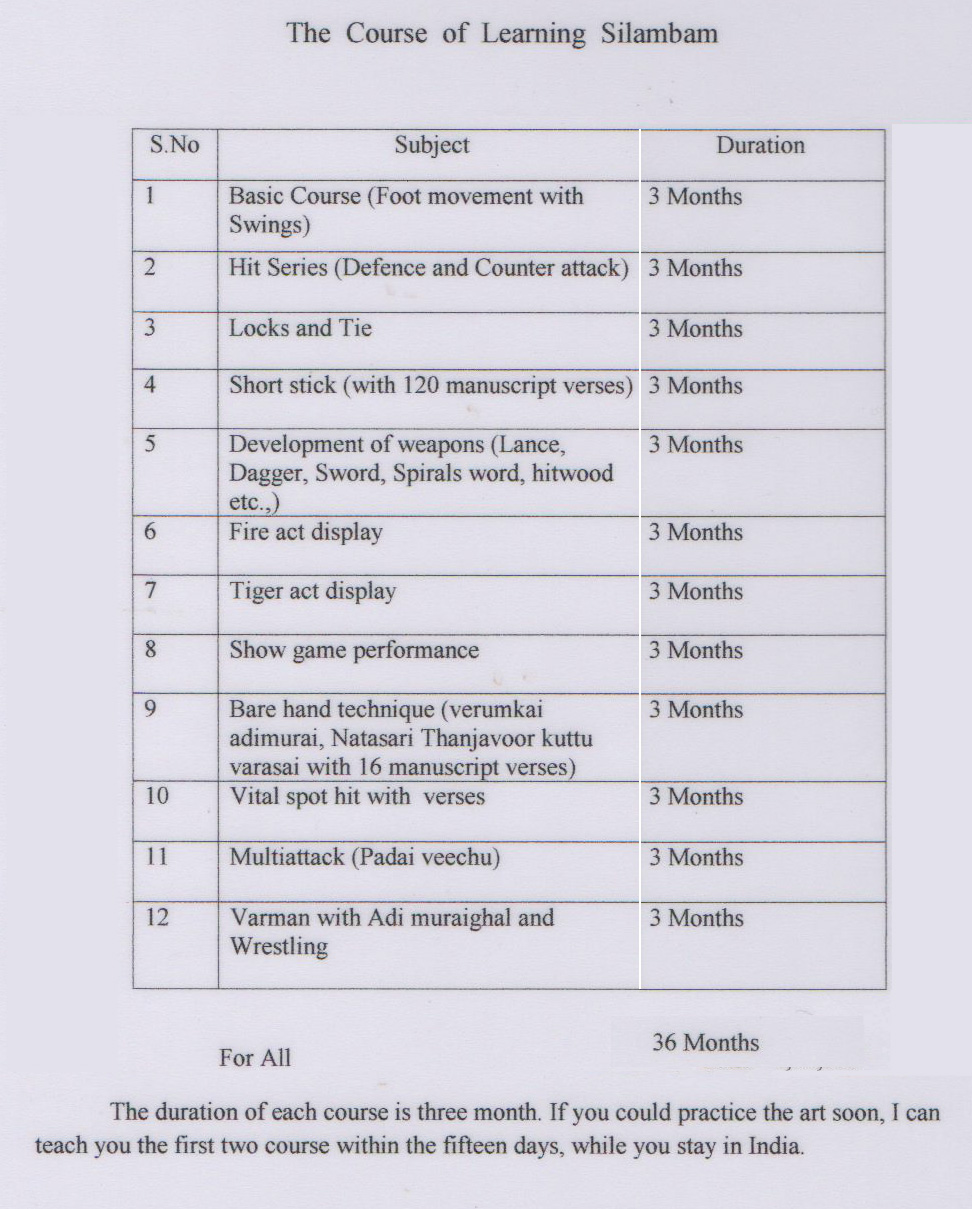

Limca Book of Records
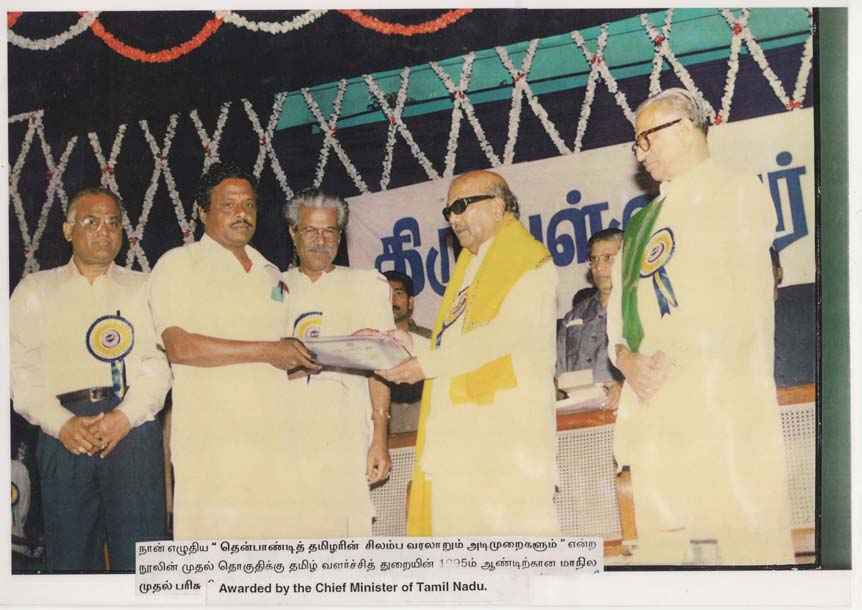
Awarded by Chief Minister of Tamilnadu
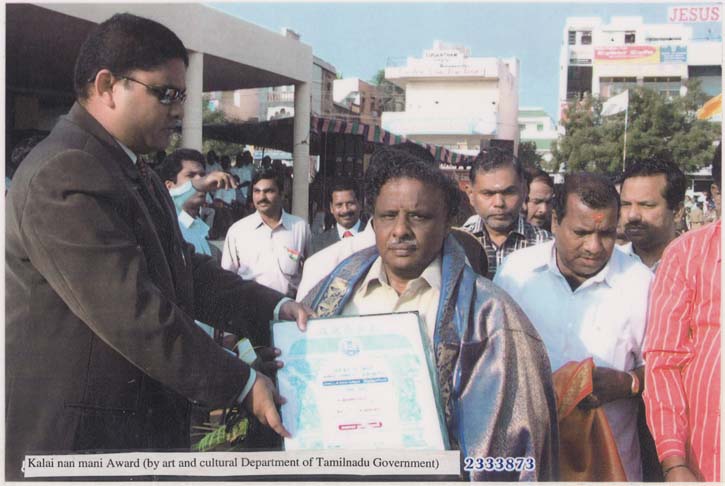
Awarded by Collector of Tirunelveli District

Awarded by Educational Minister of Tamilnadu
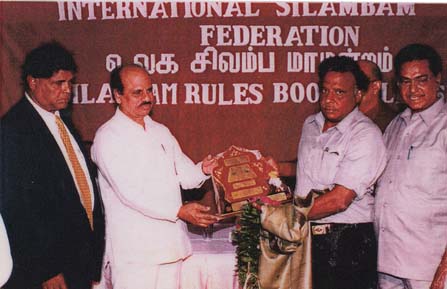
Awarded by World Silambam Federation - Malaysia
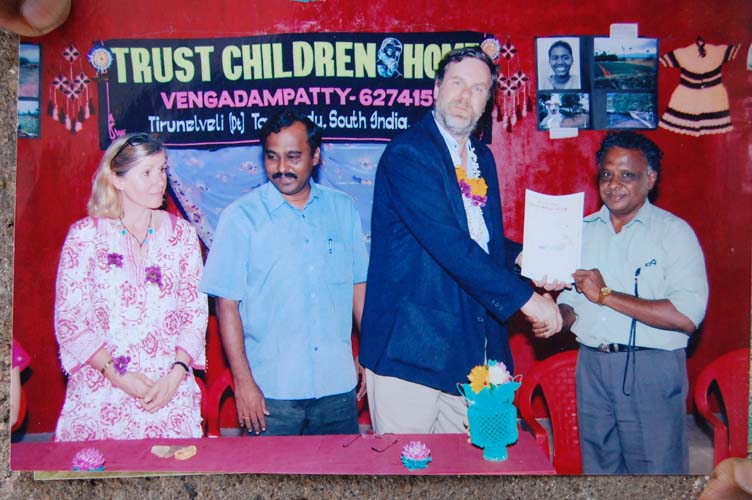
Awarded by foreigner

Cash Award for Silambam Book-1
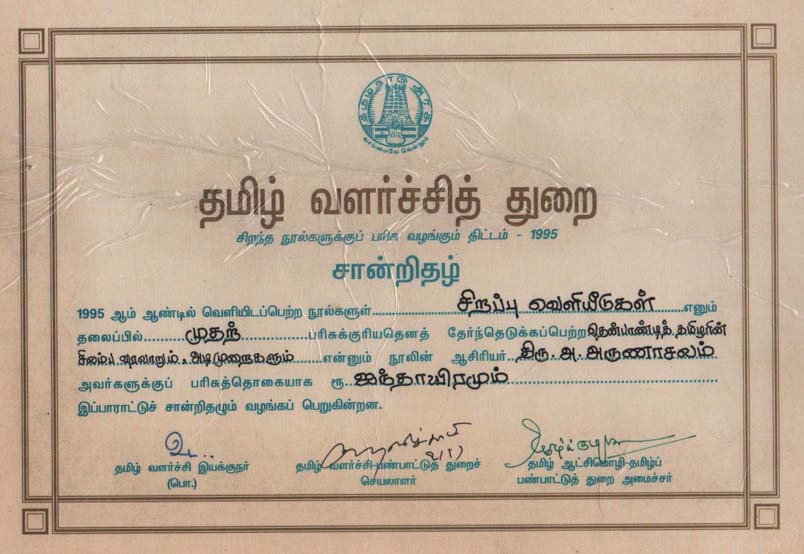
Cash Award for Silambam Book-2
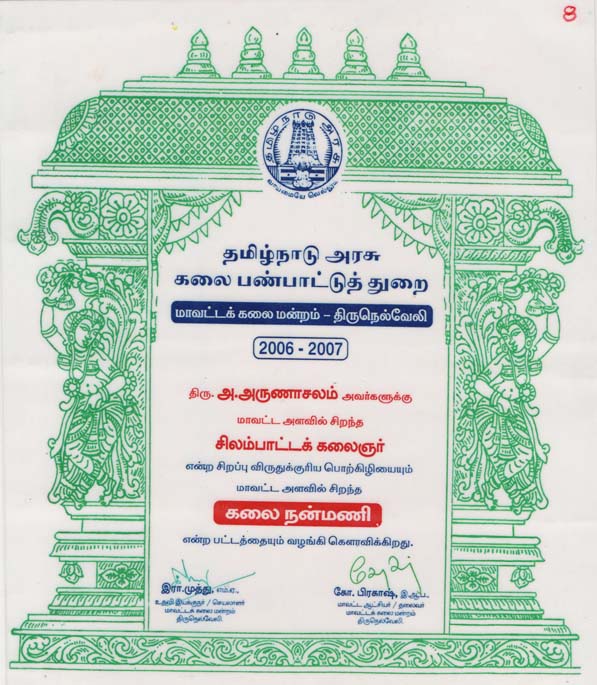
Kalainanmani Award by Tamilnadu Government1


